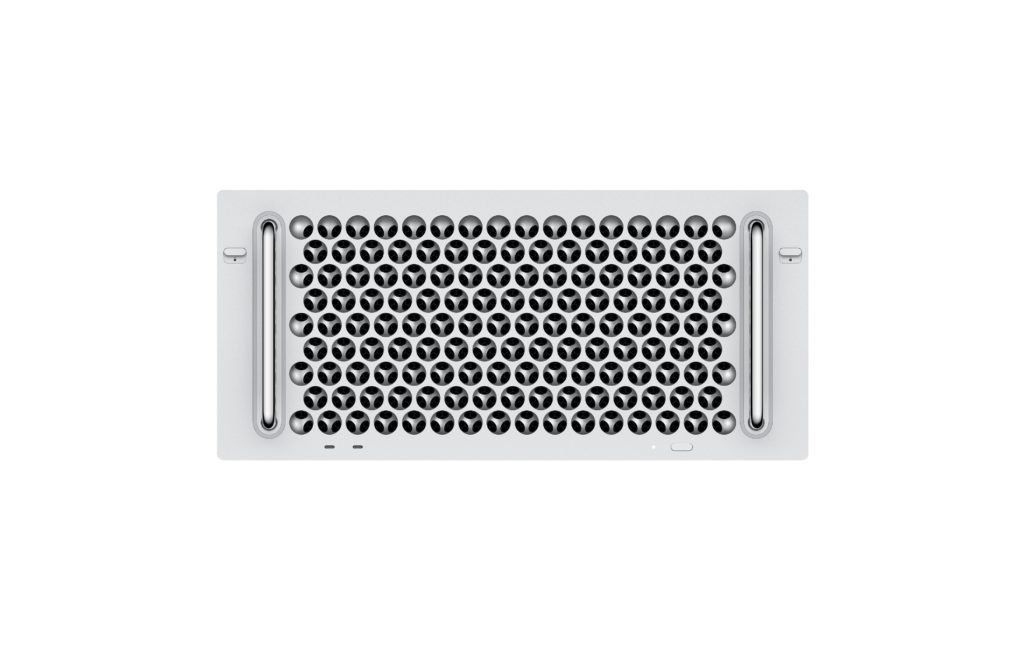Back in the day when Apple was telling ACNs that Xsan was the new thing that we all had to know everything about I went out and bought an Xserve.
Okay, it wasn’t just me: it was my fellow ACN and business partner Seth and I . And it was three Xserves. And an Xserve RAID. And a giant box to put them all in. And a fiber channel switch, a ton of cards and cables and adaptors and assorted doo-dads. And it was glorious. And cost as much as a reasonable used Toyota. And it was loud.
Really loud. Really, really loud. To the point where Seth and I would eventually pad the mobile rack with a foam kit, and then wheel it into the back corner of our office in Carpinteria, and then finally wheel it into another room, and then close the door. Don’t get me wrong; Xsan was incredible once you got it set up, and it was equally incredibly advantageous to have a test platform in place that you could throw enormous amounts of data at and have it not even blink. But when we finally pulled the plug on the Xserve/Xsan/RAID experiment after one Xserve blew a processor and another developed some kind of remarkable fault with a backplane we saw the writing on the wall, migrated everything to a couple of nice Promise RAIDs, and ended up giving away, parting out, and eventually recycling the whole lot.
And then Apple stopped making anything that would fit in a rack mount (I’m not talking about you, Mac mini/Mac Pro 2013 rack conversion kits. Sit down at the back, there). Until they came out with this:

I find myself more curious about this than I am about the stock Mac Pro – and not just because it’s a fabulous-looking piece of industrial design (and for my money much better looking than the standard Mac Pro), but because for a platform that’s been carefully engineered for cooling and silence a rack-mountable version is a slam dunk.
The thing is that it’s not simply like they slapped a couple of 19″ rails on the side of the existing box so you could stick it into a rack; it’s an entirely different machine. Sure, there are a lot of similarities with the regular Mac Pro. The base models are identical on specs, but the rackmount version is $500 more, and that $500 gets you a different chassis with migrated ports from the top of the case to the front, built-in spots to attach the included rail kit and a slightly altered rear plane that looks like it’ll accommodate increased airflow. There are those who’ll look at the $500 increase and chalk it up to Apple padding their profits unnecessarily (cough cough Pro display stand cough), but I’d ask those people to go out and look for good rail kits for rack mount servers. Not the cheap, nasty powder coated jobs that eventually buckle and refuse to extend; a really good rack kit. Go on. I’ll wait.
You’re back? And you clocked that a 4U, four-post rack kit can handily set you back about $700? Yeah. I hear you.
It kind of makes sense, though. Four-post rack kits are pricey, and with good reason. If you’re putting your 40lb, $20,000 server six feet up in the air then you want to be very, very sure indeed that it’s not being held in place by something that’s going to snap or warp or wear out, and thus risk turning your extremely pricey (and probably business-critical) asset into a large aluminum box full of broken bits.
This a machine that exists in a world of very limited uses. For every hundred Mac Pros Apple sells they’ll be lucky if they sell one or two of these. This product is an anachronism. A delightful, absurdly clever and well-designed anachronism, but an anachronism just the same; a call-back to a product that existed for a few scant years, failed to thrive, and although it was brilliant never found sufficient traction to compete or persevere.
Which is a shame, because this is exactly the machine that the Xserve should have been; powerful, price and feature comparable with the Pro desktop du jour, and (once you get over the fact that a good rack kit is a non-trivial expense) cost-effective.
And quiet. So, so very quiet.
